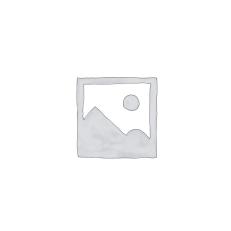Description
ABSTRACT
This study aimed at throwing light on one of the most populate theories in the management literature today, leadership style and productivity. This study is divided into five chapters, the first chapter is the introductory chapter which give a condensed historical background of profit oriented company called Unilever Industry Plc. Aba State, chapter two, deals with literature review. In this chapter, leadership is defined by many renounced management expert is considered. It also studies the limitation and other introductory sub-heading(s) and analyzed the types of leadership styles. Chapter three, deals with research design and methodology. Chapter four covers the interview and questionnaires, which I conducted and distributed using the tabulation percentage, bar-chart and pie chart in data analysis. The source using were primary and secondary data. Chapter five is the summary, conclusion and recommendations. It supported the deals of selecting the most qualified staff as leader.
TABLE OF CONTENT
Title Page……………………………………………………………………………………i
Certification………………………………………………………………………………ii
Acknowledgement ……………………………………………………………………iii
Dedication ……………………………………………………………………………….iii
Abstract …………………………………………………………………………………….iv
Table Of Content……………………………………………………………………v-vii
Chapter One
1.0 Introduction ………………………………………………………………………1
1.1 Background Of The Study …………………………………………………1-3
1.1.0 Brief History Of The Organization……………………………………3
1.2 Statement Of The Problem ………………………………………………4
1.3 Objective Of The Study………………………………………………………….5
1.4 Significance Of The Study ………………………………………………..5-6
1.5 Scope Of The Study……………………………………………………………6
1.6 Research Hypothesis……………………………………………………………7
1.4 Research Question…………………………………………………………..7-8
1.8 Limitation Of The Study……………………………………………………8-9
1.9 Definition Of Terms………………………………………………………….9-11
Summary ………………………………………………………………………………..12
Reference………………………………………………………………………………….13
Chapter Two
2.0 Literature Review ………………………………………………………………..14
2.1 Review Of Related Literature ……………………………………………….14
2.2 the nature and meaning of leadership ……………………………14-16
2.3 Type Of Leadership Style …………………………………………..16-21
2.4 Concept Of Productivity……………………………………………………21-22
2.5 Concept Of Industrial Growth…………………………………………22-23
2.6 Summary Of Literature Review…………………………23-25
Reference …………………………………………………………………..26
Chapter Three
3.0 Research Methodology ……………………………………………………27
3.1 Introduction …………………………………………………………….27
3.2 Research Design ……………………………………………………..27
3.3 Sources Of Data ………………………………………………………27
3.4 Method Of Data Collection ……………………………………28
3.5 Population And Sample Size Determination Sample Size Determination ……………………………………………………………………28-30
3.6 Sampling Techniques ……………………………………………………….30
3.7 Validity And Reliability Of Measirong Instruments Validity Of Instrument……………………………………………………………………………….31
3.8 Administration Of Data Collective Instrument………………31-32
3.9 Data Techniques …………………………………………………………32-33
Reference………………………………………………………………………………….34
Chapter Four
4.0 Data Presentation And Analysis ……………………………….35
4.1 Introduction ………………………………………………………………35
4.2 Data Presentation …………………………………………….35-42
4.3 Testing Of Hypothesis ……………………………………………42-48
4.4 Findings Of The Study ……………………………………………….48-49
4.5 Discussion Of The Findings ……………………………………………49-52
Reference……………………………………………………………………………………53
Chapter Five
5.0 Summary, Conclusion And Recommendations Restatement Of The Problem……………………………….……………….54
5.1 Summary Of The findings ………………………………………………56
5.3 Conclusion ………………………………………………………….58
5.4 Recommendations ………………………………………………59
Reference……………………………………………………………………………………..60
Appendix i ……………………………………………………………………………………61
Appendix ii………………………………………………………………………………62-63
CHAPTER ONE
1.0 INTRODUCTION
1.1 BACKGROUND OF THE STUDY
Some countries of the world are blessed with abundant resources both human and materials, which Nigeria is inclusive, so are source organizations, but the acute problem facing them is poor leadership.
These countries and organizations need effective and able leaders, who can plan direct, organized and control these abundant resources.
Leadership has defines in different ways by7 management expert. We see it as a process of influencing other people to achieve certain objectives.
It can also be defined in terms of the totality of functions performed by individual as a group. It is known facts, that people who are able to solve other problems always emerge to influence them in the business organizations, some people who are promoted to the leadership or management cannot boast actually influencing their subordinates. Some post many have come through academic qualification or appointment and not ability to influence, but once such position is attained the occupants is expected to as a leadership.
By skill, he can be to command his subordinate and induce them to follow him and obey him in order to achieve the organizational goal for effective leadership, the led must believe in the leadership ability, when double about the ability ensures, the under cannot effectively influence the followers.
Management leadership can be defined as the ability of an individual to influence others to work beyond ordinary levels to achieve goals. The ability can also exert power which will help him influence the flowers.
Power include all the personal and positional attributed that enable a leader to influence his followers and authority as the power a person has by virtue of his superior position.
The company under study adopts different leadership style in its day-to-day running. Some of the style include-Autocratic leadership style, democratic leadership style or a combination of all to increase the level of workers productivity.
1.1.0 BRIEF HISTORY OF THE ORGANIZATION
Unileiver Industry PLC Aba Abia State business as a traditional West African merchant in 1948.
In 1953, the name changes to Alabon industries (Associated Indutries 1960). In 1976, the name changes to Unileiver.
Their main brand include elephants Z.P jet, Rex, Fal Cum power Zubes super Rob, Imperial leather, Bouivite, milk. The intermediate staff of the organization are made up of one hundred and thirty three from different department of the organization seventy eight supervisors, thirty headman and twenty five clerk.
1.2 STATEMENT OF THE PROBLEM
In any business organization, there are certain problem, which are inherent, such problem may be managerial, supervisory or technical in nature and it is the responsibility of the leaders to deal with and correct of such problem are as follows:
- Leadership style as a problem: Source leader use only one style, which is not ideal because, one leadership style cannot serve in every situation. This study seeks to let larders to know that once leadership style is best, it depends on situation prevalent
- Problem of low productivity: This is a result of poor leadership. This result as workers develop low moral due to poor leadership style leaders.
- Problem of law Moral: this problem may be as a result of misapplication of power by the leader. This study will seek to find solution to low moral through good communication
1.3 OBJECTIVE OF THE STUDY
The main aim of this study is to determine leadership style adopted by private companies with particular reference Unilevier Aba and its effects on worker productivity.
- To help prepare solution to the problems of low productivity as a result of poor leadership style.
- To help in determining appropriate recommendation on leadership style that will increase their productivity.
- To work into the effects of misapplication of power by the leader and proffer solution in order to increase productivity.
- To make meaningful suggestions so as to overcome the problem of low productivity, which may result due to ineffective leadership.
1.4 SIGNIFICANCE OF THE STUDY
This study will be immense benefit to the management of PZ industry PLC Aba, as the study will help them to know the best leadership style to adopt on any given situation it will also other people occupying leadership position in many organization. The lower management will benefit very much since the study will make them to be conscious of their right and be critical to the attitude of their leaders towards them.
This study will also benefit those occupying leaders and also other who may find themselves on leadership position in future.
This research work will also benefit those occupying leadership position in government office enabling them to know the different leadership style and how to apply them.
Finally, it will help future researcher by assisting and guiding them towards a successful accomplishment of their own studies.
1.5 SCOPE OF THE STUDY
The scope of this study will cover the leadership style adopted by Unilever industry Aba in Abia State and its environments. The extent of leadership administration and the apparent attitude of workers as a result of the kind of leadership style and its ideology imagined and the effect of such leadership style on workers’ productivity.
1.6 RESEARCH HYPOTHESIS
Ho: increase in supervision by the manager has no significant relationship with the employee’s performance.
H1: increase in supervision by managers has significant relationship with the employee’s performance.
Ho: Employees constitution during decision making does not enhance their performance.
H1: Employees constitution during decision making does not enhance their performance.
Ho: Human oriented behavior does not work better for an organization than task oriented leadership behavior.
H1: Human Oriented leadership behavior work better for an organization than task oriented leadership behavior.
1.7 RESEARCH QUESTION
The research questions are also follows:
- What effects has leadership style on worker productivity?
- What factors determine the type of leadership style to be adopted?
- What are the effects of misapplication of power to an organization:
- To what extent does autocratic leadership frustrate and demoralize workers?
- What are the effect of poor leadership style and company business and its growth?
1.8 LIMITATION OF THE STUDY
It is pertinent to note that the basic constraints and impediments to the study was inability to lay and all book and materials. Other limitation are financial constraint, time constraint, time constraints, environments constraints also hampered the success of this work because the distance between the residential place of the researcher and the company had and unfold heavy cost and sufferings on the researcher, much transportation cost was involved in traveling to the company and to the residential home of the researchers.
These research was incapacitated by the trough these factor posed as problems to this study, we however, endeavored together relevant data needed through questionnaires, that were administered to substantially established objective of the study.
1.9 DEFINITION OF TERMS
- Effects: this is to cause something to happens or occur in order to achieve something
- Leadership: leadership is that art of influencing people in a positive way so as they be willing to co-operate with the leader to adhere organizational goals. In this base let us illustrate our discussion with a captain of a football team, Foe such as captain to be a good leader, he must practice for long hour and concentrate on every phase of the game.
These in leadership position must do the same for any leader to offer positive leadership that bring about good results, he must make it an intelligent, deliberate and continuity process leadership is both challenging, exciting and complex.
According to Koontz and O. Donnel (1976:587) defined leadership as an influence, the any of process of influencing people so that they will strive willing towards the achievement of group goals.
According to Akanwa (1998) believed that “Leadership” may be described as a process of influence on a group in a particular situation at a given point in time, and in a specific set of circumstance that stimulate people to strive willingly to attain organizational objectives.
According to Jeckler Hudson defined leadership as influencing and energizing of people to work together in common efforts to achieve the purpose of the enterprises.
Leadership is also described as the process of social influence in which on person can enlist the aid and support of the others in the accomplishment of a common task. In addition it is a process of getting things done through people.
According to Laurie. JMillins (1993) provided a simple definition by saying that leadership involves “getting others to follow or getting others to do things willingly.
- style: this is the way or pattern in which the leadership help in perform the duties.
- WORKERS: Workers are also the employee that are used or help in order to carry out the organizational objective without the worker, the manager cannot reach to his expectation objective.
- PRODUCTIVITY: productivity is efficiency, especially in industry with time taken by or the resource used to reduce to produce it.
- INSDUTRIAL: This is related to industry, and it is from industrial that we got industry and it is place where firm produces the products.
- GROWTH: Means the long term increase inside and activities of a company.
SUMMARY
In chapter one, we defined what leadership is all about which is, a process of influencing other people to achieve certain goals or objective. This tells us how leadership can influence organizational behavior and achieving organizational effectiveness
REFERENCE
Akanwa P.V. (1998), organizational behavior and Human relations management: An African perspective, Owerri Kosoko press Limited.
Koontz. H. and O. Donnel (1978), principle of Management (Tpkyo:McDraw-Hill)
Laurie J. Mullins (200), Management and Organizational behavior 6th edition Edinburgh, Pearson education Limited.


Reviews
There are no reviews yet.